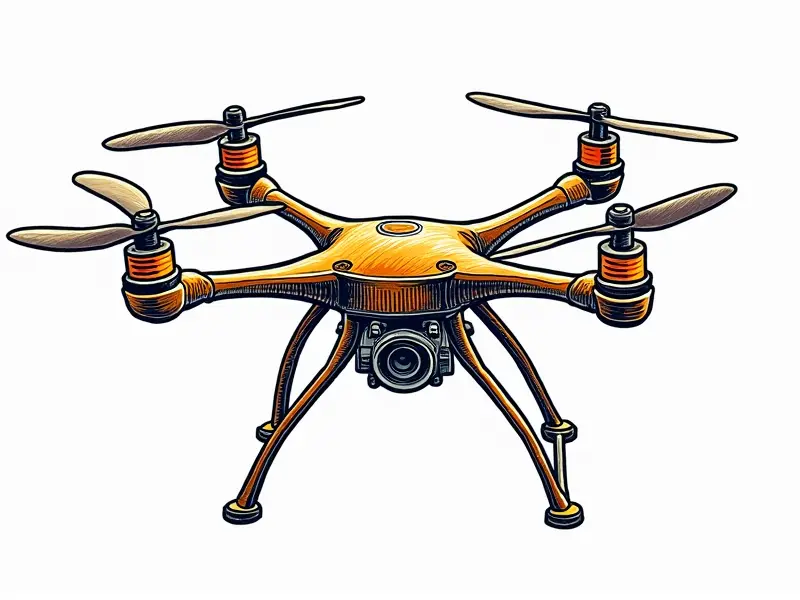How do I set up an RC receiver?

Mastering RC Receiver Configuration in Minutes
Welcome to the comprehensive guide on setting up your remote control (RC) receiver. Whether you're a seasoned hobbyist or just starting out, this article will walk you through the essential steps needed to configure your RC receiver efficiently and effectively.
Quick Setup Guide for RC Receivers
The process of setting up an RC receiver is straightforward once you understand the basics. Follow these simple steps:
- Select the Right Receiver: Choose a receiver compatible with your transmitter and intended use.
- Power Up Your Transmitter: Turn on your transmitter to ensure it's ready for pairing.
- Connect the Receiver: Plug in the receiver to the appropriate port or battery pack of your RC vehicle.
Easy Steps to Calibrate RC Receivers
Calibration is crucial for ensuring smooth and responsive control. Here’s how you can calibrate your RC receiver:
- Pair the Receiver with Transmitter: Follow the manufacturer's instructions to pair them.
- Adjust Servo Positions: Use the transmitter to move servos to their extreme positions for calibration.
- Test Functionality: Check that all functions work correctly before proceeding with use.
Beginner's Guide to Installing RC Receivers
If you're new to the world of remote control vehicles, this section will provide a gentle introduction to installing your first RC receiver:
- Understand Basic Components: Familiarize yourself with the transmitter and receiver.
- Follow Manufacturer Instructions: Each model may have specific installation requirements.
- Practice Safe Handling: Be cautious when handling electronic components to avoid damage.
Simplified RC Receiver Installation Process
The installation process can be broken down into a few simple steps:
- Prepare the Environment: Ensure you have enough space and proper tools for installation.
- Install Necessary Hardware: Securely mount the receiver in your RC vehicle.
- Connect Power Supply: Connect the battery or power source to the receiver.
Optimize Your RC Receiver in Minutes
To get the most out of your RC receiver, consider these optimization tips:
- Check Signal Strength: Ensure you have a strong and stable signal between transmitter and receiver.
- Update Firmware: Keep your receiver's firmware up-to-date for optimal performance.
- Tune Settings: Adjust settings such as travel, end points, and exponential curves to suit your preferences.
Essential RC Receiver Setup Checklist
A checklist can help ensure you don’t miss any critical steps during setup. Here’s what to include:
- Receiver Compatibility Check: Verify that the receiver is compatible with your transmitter.
- Battery Installation: Ensure batteries are installed correctly and securely.
- Signal Testing: Test the signal range to ensure reliable operation.
Fast Track RC Receiver Configuration Tips
To speed up your configuration process, follow these tips:
- Use a Dedicated Setup Mode: Many receivers have a dedicated setup mode for easy calibration.
- Leverage Manufacturer Resources: Utilize manuals and online guides provided by the manufacturer.
- Practice Regular Maintenance: Keep your equipment clean and well-maintained to avoid issues.
Rapidly Set Up Your RC Receiver Today
Setting up an RC receiver doesn’t have to be daunting. By following these steps, you can configure your system quickly and efficiently:
- Read the Manual: Start with a thorough reading of the user manual.
- Follow Step-by-Step Instructions: Proceed through each step carefully to avoid errors.
- Seek Help When Needed: Don’t hesitate to reach out for assistance if you encounter difficulties.
How to Quickly Install an RC Receiver
The installation process can be streamlined with these quick tips:
- Select the Right Tools: Gather all necessary tools before beginning installation.
- Mount Securely: Ensure that the receiver is mounted securely to prevent movement during operation.
- Test Immediately: Test your setup right after installation to catch any issues early on.
Instant Guide: Setup Your RC Receiver Now
If you’re ready to get started, follow this instant guide for a quick and effective setup process:
- Power On: Turn on your transmitter and receiver simultaneously.
- Pair Devices: Use the pairing function in your transmitter’s menu to connect with the receiver.
- Calibrate Controls: Calibrate servos and other controls for optimal performance.
In conclusion, setting up an RC receiver is a straightforward process that can be completed efficiently by following these guidelines. By understanding the basics of installation, calibration, and optimization, you’ll be able to enjoy your remote control vehicle without any hassle. Happy flying!

